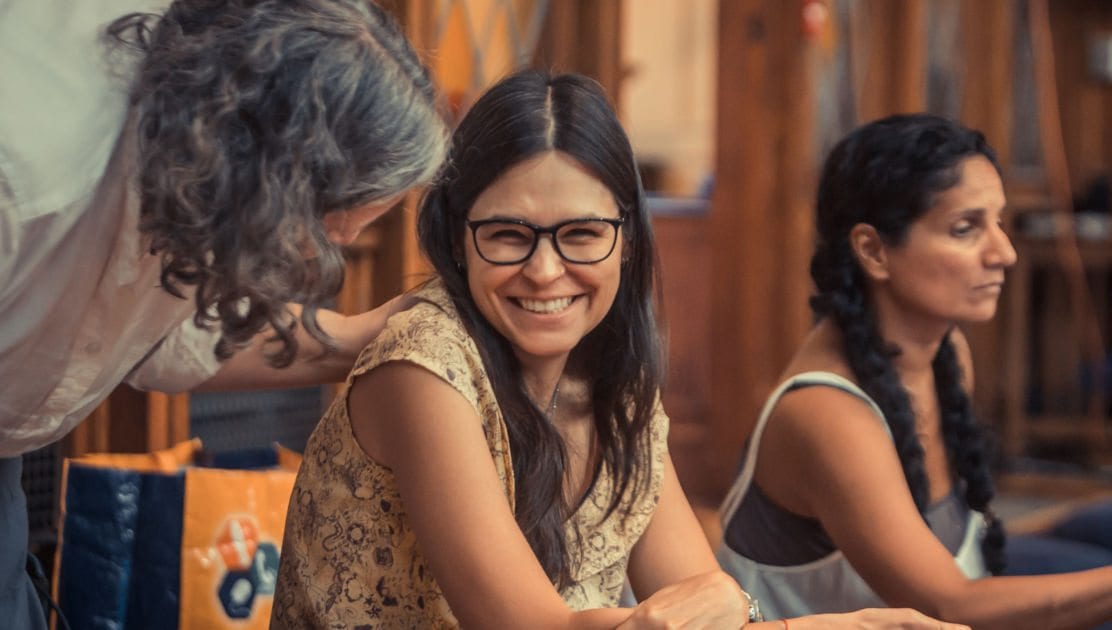What is Embodied Listening?
By David RomeDavid Rome and Hope Martin are co-leading an upcoming retreat at the Garrison institute entitled “Embodied Listening: Uncovering Our Bodies’ Natural Wisdom,” on December 2 – 4. In this blog post, David Rome explores one of the three practices presented in the program: embodied listening as it applies to our interactions with other people.
Embodied listening is listening with the whole body, a kind of deep listening in which we are fully present for others, giving them space and support to share their experience fully, without interrupting, judging, shifting the topic to ourselves, or even trying to be helpful before help is asked for.
Being present means being grounded in our own body, here and now; fully opening our awareness to the other person or people, as well as to the environment in which our exchange is taking place; and being present to our own inner stirrings as we listen. When practicing embodied listening we cultivate this settled and open attitude through a practice called Grounded Aware Presence (GAP).
Offering deep listening to others is only possible to the extent that we know how to listen deeply in and to ourselves. It involves more than just tracking the meaning of spoken words; we need to be sensitive to the other person’s facial expressions, posture, tone of voice, even their breathing. And, at the same time, we need to be sensing what is happening in our own bodies, what kind of bodily-felt responses are being evoked, as well as well as any impulses to interrupt or ask questions or offer advice before the other person feels fully heard.
Of course, sometimes speech is purely to convey information, but even then it is important to be sensitive to how the other person is receiving that information. Too often our conversations are literally “discussions,” whose Latin root means “hitting” (as in percussion and concussion)—as if the purpose of conversation is to continually counter what the other person is saying, like hitting a ping-pong ball back and forth. The word “conversation,” also from Latin, literally means “taking turns with each other.” And “dialogue,” from the Greek word dialogos, means “sharing meanings among.” Embodied listening is the foundation for true dialogue, a quality of listening that seeks to perceive and to share deeper meanings.
In the “Embodied Listening” workshop, we cultivate this deeper kind of listening with the practice Mindful Focusing. Originated by American philosopher/psychologist Eugene Gendlin, Focusing is all about sensitizing ourselves to subtle, often unclear, inner “felt senses” which, when gently attended to, can “come into focus,” leading to fresh insights and novel possibilities for action. The practice emphasizes listening inside oneself by recognizing our own meanings at a preverbal, bodily-felt level.
Much of the practice is done in two-person listening partnerships. Taking turns, one person, the Focuser, brings attention inside their body to access deeper levels of knowing and shares some of what they find with their partner. The other person, the Listener, attends primarily to what their partner is sharing, while still tracking their own inner sensations.
Embodied listening is a contemplative practice for working with specific situations and issues in one’s life. It is a perfect complement and enhancement to mindfulness practices. Meditators who experience it for the first time often describe it as “the missing link.”
David Rome is the developer of Mindful Focusing, an integration of Eugene Gendlin’s Felt-Sense Focusing and Buddhist mindfulness-awareness practices. He is the author of Your Body Knows the Answer: Using Your Felt Sense to Solve Problems, Effect Change, and Liberate Creativity. David studied Buddhism with Chogyam Trungpa Rinpoche, whom he served as private secretary for many years.

I am reminded of this from the article linked below:
“There is one thing, monks, that cultivated and regularly practiced, leads to a deep sense of urgency, . . . to the Supreme Peace . . . to mindfulness and clear comprehension, . . . to the attainment of right vision and knowledge, . . . to happiness here and now, . . . to realizing deliverance by wisdom and the fruition of Holiness: it is mindfulness of the body.”
http://dharmawisdom.org/teachings/articles/starting-mindfulness-meditation-practice-0#sthash.s5vlrGbb.dpuf